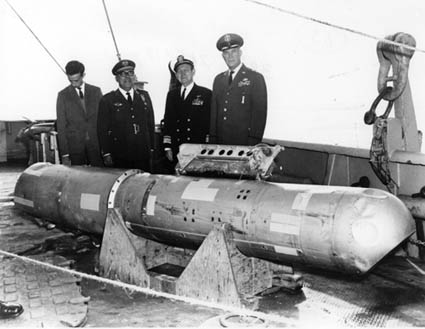
Story Highlights
- Historical event:
- 17 March 1966
- It was a hydrogen bomb dropped from the American B-52 bomber earlier that year. The maximum power of such a bomb could have been about 90 times greater than the power of the nuclear bomb dropped on Hiroshima.
On this day U.S. submarine Alvin managed to find a lost nuclear bomb near the Spanish coast.
It was a hydrogen bomb that was dropped from the American B-52 Stratofortress bomber earlier that same year. Namely, that bomber collided with a plane during mid-air refuelling over the Mediterranean Sea. The bomber carried four hydrogen bombs, 3 of which fell on the Spanish coast, and one into the sea.
The three bombs on the coast were quickly taken care of, but the bomb that ended up in the sea presented a greater problem. It was a B28RI type hydrogen bomb, which means that it could have a maximum power of 1.45 megatons (which is about 90 times more powerful than the atomic bomb dropped on Hiroshima).
The Americans sent many ships to the area in order to find the bomb (more than 25 vessels). Only after 2 and a half months, precisely on this day, the Alvin submarine was able to detect the bomb. It was located at the depth of 869 meters. After a lot of trouble, the bomb was brought to the surface.
Alvin is an American special submersible for deep diving operations. It is mainly known for being the first manned vessel that reached the wreck of the Titanic. Alvin has the ability to dive to depths of up to 4,500 meters. It was in use since 1964, and is still used today.




